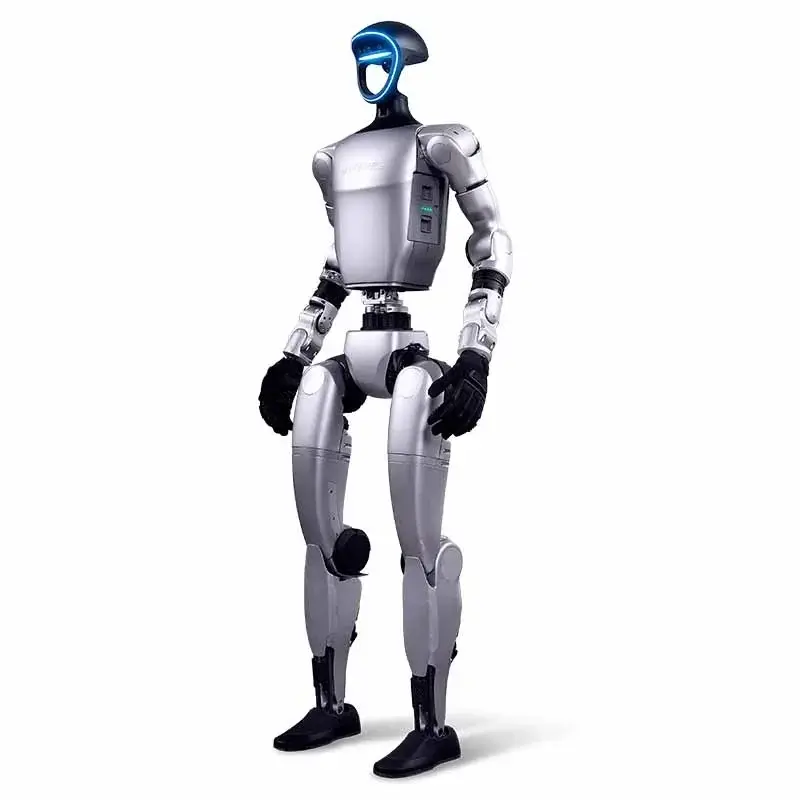Real cost of unlocking 5-axis CNC machining: comprehensive faults
So you have identified a part with complex geometry that requires precision or requires nearly impossible angles that are conquered only by 5-axis CNC machining. This is a powerful solution that can be machined from any angle in a single setup – resulting in incredible precision, smoother finishes, complex geometry and faster production times for complex components. But naturally a key problem arises: "How much does it really cost?"
Understanding cost structure is more than just getting a quote; it’s about strategic decisions. For businesses looking to procure precise parts, understand the facilitators to make better plans and supplier assessments. For manufacturers like us, transparency about cost-driven forces is essential to building trust and demonstrating the value we provide.
Compared to 3-axis machining, investing in or utilizing 5-axis CNC machining is much more complex and therefore expensive. Let’s analyze the main cost components:
-
Heart: Machine Acquisition and Depreciation (Maximum Early Hit)
- The machine itself: This is usually the main cost factor. A new industrial grade 5-axis CNC machining center is a complex project at the cost $100,000, over $1,000,000 Dollar. Price differences depend on:
- Size and work envelope: Larger machines capable of handling larger parts.
- Accuracy and rigidity: Aerospace-grade machines designed for micro-level tolerances use high-end components (linear guides, spindles, castings) and add to the cost.
- Brand Technology: Mature brands with proprietary control systems and cutting-edge features such as advanced vibration damping, temperature compensation are more costly.
- Header type: Machines with continuous 5-axis function (simultaneous movement of all axes) cost significantly more than 3+2 axes machines (positioning tool head and 3 axes machining).
- depreciation: Break down the hourly cost of running the machine into depreciation – propagate its purchase price to the case of its useful life (usually 7 – 15 years). This is a substantial, often overlooked operating cost.
Why look good? : Working with experts like Greatlight eliminates a lot of upfront capital expenditure. Our investments in advanced 5-axis platforms (e.g. Hermle, DMG Mori, Haas) means you can access cutting-edge technology without purchasing risk, depreciation management or huge loans.
- The machine itself: This is usually the main cost factor. A new industrial grade 5-axis CNC machining center is a complex project at the cost $100,000, over $1,000,000 Dollar. Price differences depend on:
-
Foundation: Tools, labor and fixation (hidden necessities)
- Cutting tools: 5-axis machining usually involves complex profiles and stiffer materials, requiring specialized high-performance tool holders (such as HSK63A or CASTO with high rigidity) and a large number of precise cutting tools (End Mills, drilling rigs, drilling, boring tools). High-quality carbide or diamond-coated tools are expensive, but are critical to performance and tool life.
- labor force: Ensuring complex parts at composite angles requires complex fixtures – vacuum rock, custom poses, dedicated hydraulic/pneumatic fixtures or zero-point clamping systems. Design, manufacture and prove that these fixtures can increase the cost per job.
- Fixed design and settings: Design and plan the time and expertise required for safe, efficient factory setup are the main contributors to project costs. This is the core advantage of an experienced 5-axis store.
Why big? Our engineers specifically design efficient partially specific fixtures when needed.
-
Brain and Nervous System: Software and Programming (Knowledge Investment)
- CAM software: Advanced CAM (Computer Aided Manufacturing) software package that generates safe, efficient, and conflict-free 5-axis tool paths. Licenses for top-level CAM software (such as MasterCam, HyperMill, NX CAM) represent huge ongoing costs.
- Programming expertise: Programming a 5-axis machine is much more complicated than a 3-axis. It requires highly skilled CAM programmers with in-depth knowledge of kinematics, tool/matter interactions and collision avoidance. The time spent in simulated, optimized, and validating complex programs is substantial, and translated directly into the cost of each project. The postprocessor must also carefully adjust the specific combination of mechanical tools.
- CAD and simulation software: Investing in high-quality CAD software and powerful simulation tools (to prevent expensive crashes) is also part of the cost of infrastructure.
Why be outstanding? : Our team includes experienced CAM programmers who are proficient in the latest software. We invest in continuous training and leveraging advanced simulations to ensure optimal, efficient and safe tool paths, maximizing machining efficiency and reducing waste risk.
-
Hands: Personnel and Labor (skills appear at a premium)
- Operator: Running a 5-axis machine requires deep operational knowledge, in addition to easy loading and a pressing start. Understanding setup programs, machine monitoring, process inspection, troubleshooting, and tool life management is crucial. Qualified 5-axis operators direct higher salaries.
- Set up technicians: Precise settings require consistent attention to details and a lot of expertise and compensation accordingly.
- Engineering and Programming: The salary of qualified CNC mechanics, programmers and manufacturing engineers represents the major operating costs.
Why highlights? : Leverage our team of trained mechanics, programmers and engineers to remove the burden of obtaining and retaining this expensive professional talent from the balance sheet.
-
Hosting: Maintenance, utilities and consumables (ongoing operations)
- Preventive and reactive maintenance: 5-axis machine is very complicated. A stringent preventive maintenance schedule (lubrication, calibration, ball screw inspection, spindle maintenance) is non-transmission and expensive. Unexpected repairs come with obvious price tags.
- Utilities: These machines consume a lot of power. Coolant systems, chip conveyors, and powerful spindle and shaft drivers add power costs.
- Coolant and lubricant: Continuous use requires a large amount of special coolant and lubricant.
- Store Fees: General overhead (facilities cost, insurance, taxes) must be allocated to machine operations.
Why big? : Our maintenance procedures ensure machines operate at peak performance and lifespan, thus preventing expensive downtime. Economies of scale help to effectively allocate these overheads.
-
Raw materials: starting point
- Material Cost: The basic cost of metal blocks (such as aluminum, titanium, steel alloys, etc.) is basic. Exotic or high-performance materials significantly increase this. Large amounts of waste (chips) are inherent in subtraction manufacturing.
- Material preparation: Steps such as cutting the original blank into manageable sizes can incur additional processing costs.
Why big?
-
Last Touch: Post-processing and Finishing
- Deburring: Complex parts require a lot of manual or automated damage.
- Surface treatment: Processes such as anode oxide (aluminum), passivation (stainless steel), electroplating, painting, polishing, heat treatment, etc. increase costs according to the process and quantity.
- QC and check: Advanced metrology (CMM-coordinate measuring machines) is often critical to validating complex 5-axis parts, representing equipment and skilled operator costs.
Why highlights? :As a full-service provider, we simplify the journey by providing integrated post-processing and internal completion, saving time, logistics costs and managing supply chain complexity.
-
Unique drivers: Part complexity, tolerances and volume
- complex: More complex geometries require longer machining time, more complex programming, and potentially special tools/fixes, directly increasing costs.
- tolerance: Maintain extremely tight tolerances (+/- 0.0005" or less) requires slower processing speeds, better quality tools, meticulous setup and potential multiple inspection operations, which greatly increase costs.
- volume: Higher economies of scale benefits – Setting costs amortize on more parts, unit reduction in tool costs, and processing processes can often be optimized for production speed.
Why highlights? : We are good at driving complexity and achieving demanding tolerances. For large batches, we implement strict process optimization to ensure separate pricing for each group.
Conclusion: Investment capability and partners
The real cost of 5-axis CNC machining includes more than just the quotes of the part itself. It reflects a huge investment in cutting-edge machinery, highly specialized expertise, sophisticated software, rigorous operating and maintenance, and the inherent complexity of producing parts that cannot be produced by simpler methods.
For businesses that need these features, the path does not necessarily need to absorb all of these fees internally. Work with specialized 5-axis CNC machining experts Great Provide a compelling value proposition. Our investment strategy focuses on acquiring and maintaining state-of-the-art 5-axis equipment (HERMLE, DMG MORI, HAAS), fostering a team of highly skilled engineers and mechanics, implementing a strong software infrastructure, and providing integrated post-processing – all of which can be delivered Precision custom metal parts are efficient and cost-effective.
We bear a huge capital burden, depreciation and operational complexity that translates it into accessible, predictable and competitive pricing your project. Whether you need complex prototypes, micron-level accuracy, or volume running mission-critical components, Greatshile leverages its deep expertise and state-of-the-art infrastructure as your trusted first choice. Ready to transform complex designs into precise reality? Customize precision parts now with Greatlime – efficient delivery at the best prices.
FAQ (FAQ): 5-axis CNC machine cost
Q1: Is 5-axis CNC machining always more expensive than 3-axis?
- one: Each processing Houryes, a 5-axis machine that has and operates is much more expensive. However, for complex parts, Total cost per part Usually reduce Use 5-axis machining. This is because it often allows complex parts to be done in one setup, eliminating the multiple settings required on a 3-axis machine (each requires programming, labor, setup time and fixed costs). It also typically reduces the entire cycle time and can eliminate the need for complex custom fixtures used in multiple settings. Simple prismatic parts are usually cheaper on 3-axis machines.
Q2: What drives the high price of the 5-axis machine itself?
- one: Cost reflects huge complexity: complex high-precision bearings and linear guides, powerful high RPM spindles, complex expression head/rotating table mechanisms, requiring absolute precision and rigidity, advanced CNC controls, capable of managing 5-axis interpolation, strict manufacturing capabilities for machine composition and pollution systems, pollution systems, pollution systems, pollution systems, pollution systems, pollution systems, pollution systems, and pollution systems. The research, development and know-how of leading manufacturers have also contributed.
Q3: Can I get one "Cheap" 5-axis CNC machine?
- one: Although entry-level desktop or hobbyist 5-axis CNC routers exist ($10k-$50k), they are fundamentally different from industrial 5-axis machining centers. Industrial machines built for reliable high-precision metal cutting and tolerances capable of measuring in microns require the above-mentioned powerful engineering capabilities starting at $500k and above. The cheaper industrial solutions can seriously damage rigidity, accuracy, reliability, control capability and life. "Very good" Prices usually fall into the previous category.
Question 4: How much does a typical 5-axis CNC machining part cost?
- one: Provide a "Typical" Price is impossible. A simple aluminum prototype part may cost $300-$500. Titanium’s complex aerospace components have tight tolerances that require extensive programming and complex fixtures, and each part sells for $5,000-$10,000+. Key factors: Material Type/cost, part complexrequired Tolerance/surface finish,,,,, Processing time,,,,, Fixed demand,,,,, Tool Requirements,,,,, Batch sizeand Post-processing. A detailed CAD model is essential for accurate quotes.
Question 5: How does Greatlight offer competitive pricing on complex 5-axis parts?
- one: Our pricing competitiveness comes from Invest in infrastructure (Efficient high-end machines reduce hourly amortization costs), Deep professional knowledge (High-skilled employees optimize programming and machine efficiency, reducing cycle time and errors), Operational experience (Optimized workflow reduces non-cut time), and Economy of scale (Buy material, lay tops on many sections, effectively nesting). Essentially, we can achieve more value every hour of operation.
Question 6: Does my quote include programming costs?
- one: Yes, absolutely. The time and expertise required for CAM programming, toolpath generation, simulation and verification have taken into account the overall project cost cited by Greatlight for Your parts. We do not divide it into separate order items unless explicitly required; it is an integral part of manufacturing a specific design.
Question 7: How does the number of parts affect the cost of 5-axis machining?
- one: The higher volume is significantly reduced Per-part fee. While large projects such as programming and fixed settings are amortized at one-time (or low-frequency) costs, efficiency can also be improved: machining programs can be fine-tuned for speed, tool paths that optimize production flows, highly simplified settings, and more quickly purchased materials. Larger batches utilize the efficiency potential of 5-axis machining.









































